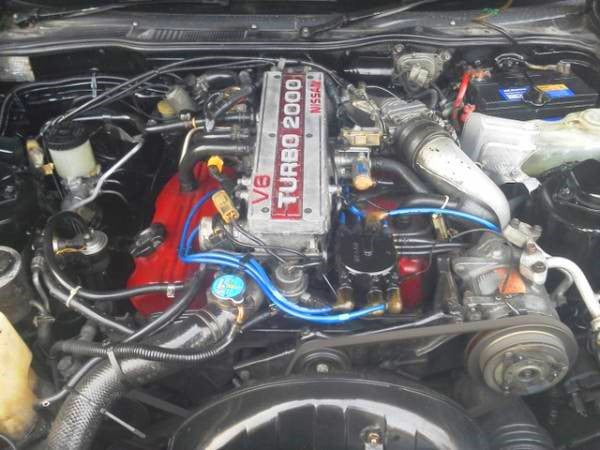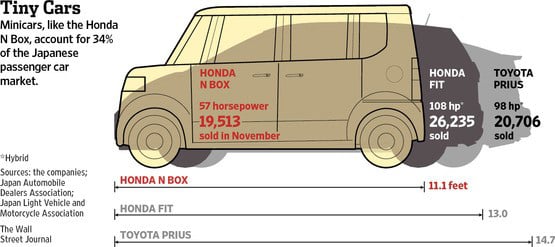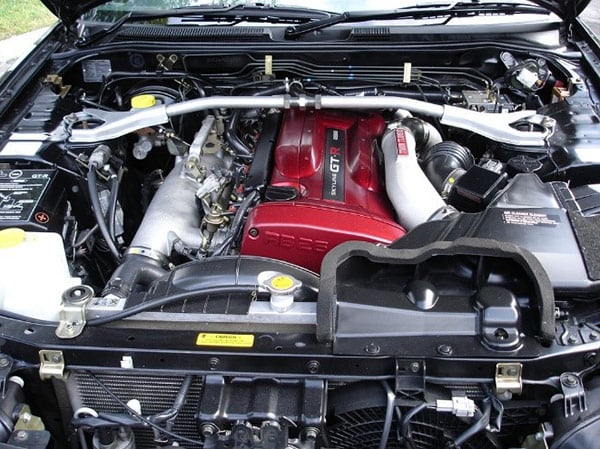When older Japanese cars and engines are examined closely, you’ll start noticing some odd similarities. One such example on Japanese engine displacement is that almost all Kei (mini) cars and trucks have a 660cc engine and are almost identical in exterior size, almost down to the centimeter. Another example on Japanese engine displacement is the 2000CC engines on cars older than 1989. Classic Datsun and Nissan Z cars were exported with 2.4 – 3.0 liter engine displacement, but Japanese engine displacement was only 2000CC. Do Japanese car owners like having less power and smaller cars than foreigners? While owning a smaller vehicle is a definite benefit for some, the main reason is road tax.

VG20 Turbo (2 liter) engine in a Z31
For tax purposes, Japanese passenger vehicles are split into only 3 different classes. They are:
Kei: Currently regulated to less than 3.4m long, 1.48m wide, and 2m high with an engine displacement under 660cc.
Small: Currently regulated to less than 4.7m long, 1.7m wide and 2m high with an engine displacement under 2000cc.
Normal: Anything larger than Small. Maximum vehicle dimensions are 6m long and 2m wide.
To encourage purchasing of cars post-war (the first regulations on Kei starting in 1949), the road taxes on Kei cars were significantly lower than that of the Small car, which was, in turn, significantly lower than taxes on Normal cars. How significant? Kei annual taxes were almost ¼ the tax of Small cars, which was less than ½ of Normal cars. For comparison, according to the Japan Auto Manufacturers Association, Japanese auto tax is approximately 14 times more than the US, 2.4 times more than Germany, 1.4 times more than the UK, and 6 times more than France. The discounts on smaller vehicles made a big difference to Japanese vehicle owners.

Normal: Anything larger than Small. Maximum vehicle dimensions are 6m long and 2m wide.
Starting in 1989, in order to encourage the people to start buying larger engine cars, the small and normal car tax became a graduated scale in .5 liter increments. So a 2.5 liter car would still be more expensive, but not twice as expensive as a 2 liter car. This change in the tax structure is why cars such as the 300zx (z32), Supra (A80) and Skyline GTR (R32) all had both a Japanese engine displacement option of 2 liters, but all new models after 1989 only have larger engine displacements.

RB26DETT from an R34 GT-R
Within the last 3 years, new legislation has been passed to discourage Japanese car buyers from buying Kei by raising the tax on Kei vehicles. The road tax was raised 50% on newer Kei vehicles and almost 100% on older Keis. Consequently, there was a drop in Kei vehicles being purchased with more car owners giving up driving as opposed to replacing their Kei with a larger car. Although Kei vehicles still hold a 35%+ market share, if current trends continue, we may be seeing the beginning of the end of Kei cars and trucks as we know it.
Written By: Yoshiro Nakajima
For more information or sales inquiries please contact me at: yoshijapancardirect.com
Links of interest:
Japanese road tax (Wikipedia)
Vehicle size classes (Wikipedia)
Japanese Auto Taxes (government page)
Japanese Auto Tax Chart
Kei Car Tax Change (Japanese)





